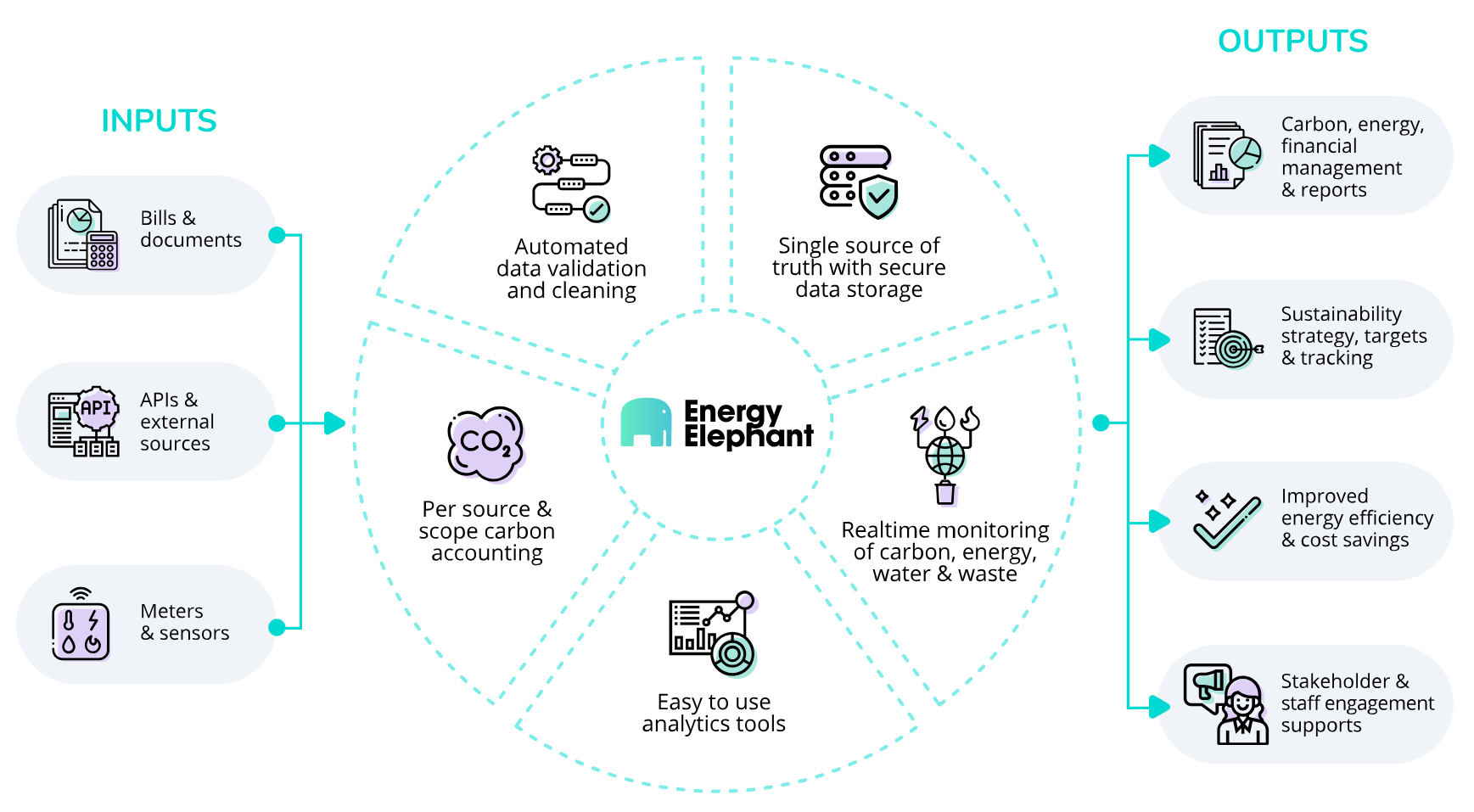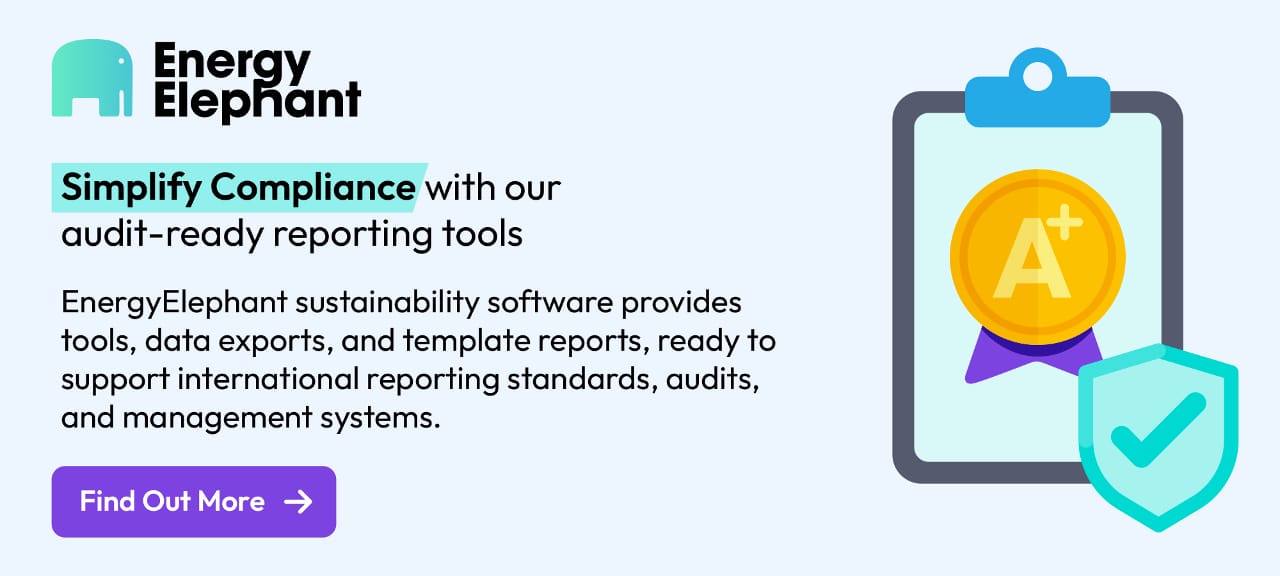How to Make Tenant Utilities Data Collection Easier for GRESB Reporting
Advancements in smart technologies and sustainability software offer powerful solutions to commercial property owners and managers, transforming the once uphill battle of obtaining utilities data into a streamlined workflow that aligns tenant and landlord interests.

GRESB (Global Real Estate Sustainability Benchmark) is an organisation established in 2009 to assess and benchmark the ESG (Environmental, Social, and Governance) performance of real estate assets worldwide. It serves over 150 institutional investors and financial institutions by evaluating sustainability practices in real estate and infrastructure investments.
A GRESB Rating is derived from an annual GRESB Assessment that scores how well an organisation manages ESG risks and opportunities, influencing investment decisions, and promoting transparency. This benchmarking helps drive improvements in sustainability practices across the real estate sector, impacting both listed property companies and private property funds.
The GRESB Assessment places significant emphasis on actual energy consumption at the asset level. And the Performance component, which includes metrics like energy consumption and greenhouse gas (GHG) emissions, directly impacts an asset’s GRESB Score. Data coverage of these operational performance metrics is specifically rewarded.
But a persistent hurdle encountered by many responsible for GRESB reporting, particularly those managing multi-tenant properties, is the often frustrating process of trying to gather tenant utilities data. Below we’ll explore some of the contributing factors, and potential solutions to the problem.

Common reasons why it can be difficult to obtain utilities data from tenants
The commercial real estate landscape, with its diverse lease structures like percentage, net, and gross leases, presents a minefield of complex and often extraordinarily taxing demands when it comes to ESG reporting and sustainable development. But with investors increasingly scrutinising ESG data quality, and regulations tightening, a lack of substantiable energy and carbon data from tenants can create a major blind spot for GRESB reporting.
Some of the most frequently encountered challenges include:
- Data Security and Control Concerns: Tenants may be hesitant to share data due to concerns about data security, potential misuse of insights (like rent increases), or tracking of their business activities.
- Lack of Tenant Incentive: Tenants are primarily focused on running their businesses, and while they might appreciate energy cost savings, it's often not their top priority. Landlords need to be more understanding of this perspective.
- Administrative Burden: For both landlords and tenants, the manual processes of collecting, sharing, and managing utility bills can be time-consuming and prone to human errors. This added ‘bureaucracy’ can further discourage participation.
- Complex Lease Agreements: Existing leases (in particular long term 10+ year leases) may not include provisions for mandatory data sharing, making it difficult for landlords to access this information without renegotiating or obtaining explicit consent. Even obtaining Letters of Authorisation (LOAs) can be a tenant-dependent and administratively painful process.
- Lack of Standardisation: Different utility providers use varying data formats, making it harder to consolidate and analyse information even when it is obtained.
While the obstacles are real, they are not insurmountable
Advancements in smart technologies and sustainability software offer powerful solutions to transform the often-burdensome process of collecting tenant utilities data into a streamlined workflow that aligns tenant and landlord interests.
Here's how a combination of hardware, software, and humanware (UX and UI – both of which are crucial to user engagement and productivity), can be used to achieve your objectives:
1. Hardware: Installing sub-metering
Utility sub-metering provides granular energy and water consumption tracking in real-time. While initial investment is required for the installation of these IoT-enabled devices, there are many additional benefits.
As neutral intermediates, sub-metering providers increase the visibility into consumption patterns for both owners and occupiers. Tenants can unlock opportunities for improved energy efficiency, reduced resource consumption, and lower operating costs. Landlords gain the critical data they need to optimise the sustainability rankings of their assets, whilst simultaneously respecting the autonomy of their tenants.
2. Software: Integrating sub-metering with sustainability software
Integration of IoT sensors and sub-metering systems with a cloud-based sustainability management platform via an API automates the collection, validation, and storage of all energy and carbon data in one central, searchable, and secure location, providing live views and analyses of resource consumption at the asset level.
The insights provided from this single source of truth allow users to identify dependencies, find opportunities for optimisation, and establish robust benchmarking. The audit trail and clear linkages to primary data sources within the system also ensure that ESG reporting meets third-party validation standards.
3. Humanware: Ensuring end-to-end data visibility
Ensuring end-to-end data visibility in a user-friendly portal with easy-to-understand dashboards helps establish transparent data practices, enabling landlords to provide accurate information to tenants regarding their data usage, and respond to queries or requests related to this data. Tenants are more likely to work with a landlord when they feel their data provides value and is protected.
Nurturing an open, collaborative environment through a consistent interface promotes a culture of shared responsibility, which gives both parties impetus to drive continuous improvement in energy management practices within their own sphere of influence. When synergy occurs, sustainability outcomes for both landlords and tenants can be significantly enhanced.
Benefits of sustainability software for GRESB reporting

Sustainability software platforms, like EnergyElephant, are specifically designed to provide large companies, SMEs, and multi-site organisations with a single source of truth for all their energy and carbon data, and a central hub for all their data monitoring and reporting.
The EnergyElephant platform offers:
- Seamless Integration: Our software supports access to real-time IoT sensors and sub-metering systems from multiple country/region data sources, to provide live views and analyses of your energy supply and consumption. This is done through integration of your meters and sensors with our system via our API or other connections.
- Granular Level of Detail: The system’s main dashboards act as a mission control for you to dive into your data quickly. You can drill down into any level of detail, gain insights on performance and savings, and identify any data gaps that need filling. Access to your data at any level of granularity enables better-informed decision-making.
- Real-time Data: Access to real-time data at the asset level across all facilities helps you identify areas that need attention on any given site. Being able to take corrective action within minutes of an incident occurring leads to improved energy efficiency, reduced resource consumption, and lower operating costs.
- Tiered Access: EnergyElephant allows you to add multiple users to your account and assign appropriate access levels based on need and responsibility, ensuring alignment with organisational roles and security requirements, to mitigate the risk of privilege escalation and unauthorised actions.
- Compliance with Multiple Frameworks: The platform’s easy-to-use, audit-ready reporting tools ensure your data is compliant with international protocols and frameworks, including: GRESB, CSRD, CDP, ISO 50001, and more.
- A Meter-reading Mobile App: Along with our core platform, we created the simple-to-use EnergyElephant meter-reading mobile app which makes every meter a little bit smarter, even in places where smart meters may still be years away. The system allows any EnergyElephant user, in any location, to take a photo of any electricity, gas, or water meter on their smartphone, and upload it directly to their account. Because the mobile app is tailored to our platform, you will instantly be able to see how efficiently you are using energy, and identify opportunities for cost and energy savings to improve sustainability. It’s up to 90% faster than traditional meter-reading systems, and less travel by utility providers to physically read meters has environmental benefits too, as the amount of carbon emissions and air pollution from vehicles is dramatically reduced. Our app has been used in 70+ countries around the world to date.

